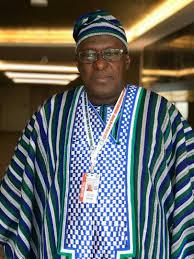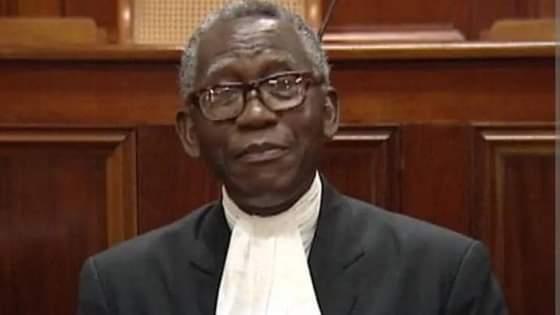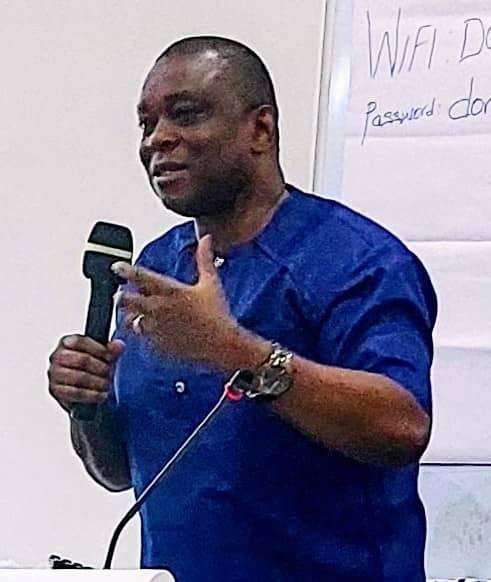Sierra Leone’s trajectory of hope
Prior to the November polls, I made a solid argument, justifying the reelection of President Ernest Koroma. I postulate that the need for Sierra Leoneans to maintain the trajectory commenced by President Ernest Bai Koroma as was contained in the ‘Agenda for Change’ was needed, given the progress made by President Koroma during his first term in governance through the ‘Agenda for Change’
The nation’s trajectory through the Agenda for Change was a success. It laid the platform for economic growth. In the area of infrastructure, we witnessed the resurfacing/construction of Makeni – Matotoka Highway and the Bo – Kenema Highway; the completion of the Masiaka – Bo Highway; rehabilitation of 600km of feeder roads in Port Loko, Kambia, Pujehun and Kenema Districts; rehabilitation of twenty five (25) km of selected streets in Freetown; rehabilitation of a combined total of 250km of streets in all of the 12 district headquarter towns and Lunsar township; and the reconstruction of the Freetown –Conakry Highway. The country undertook the widening of the Lumley-Hill Cot Junction route (3.4Km) into a four lane dual carriageway , Wilkinson Road (5.2Km), widened into a four lane dual carriageway, took a big step forward in transforming the Lungi international Airport and with support to the Sierra Leone Maritime Administration (SLMA), country saw the construction of jetties in various locations.
In agriculture, the National Sustainable Agricultural Development plan, a platform for increasing agricultural productivity, promoting commercial agriculture through extension delivery systems and promoting efficient sector resource management became successful and produced the needed result. The Smallholder Commercialization Programme led to the construction of 193 Agricultural Business Centres with at least, one in every chiefdom, equipped with mini rice mills, cassava grating machines, drying floors and water sources to assist small farmers in processing, adding value and marketing their products.
In essence, the Agenda for Change brought about success in bolstering the country’s economy, improving and expanding road infrastructure, expanding energy generation and distribution promoting job creation and self employment, scaling up agriculture and promoting trade and industry.
The Government’s present trajectory, through the ‘Agenda for Prosperity’ is geared towards moving the country to becoming a middle income status. The agenda has a vision of seeing Sierra Leone to becoming a middle-income nation by 2035; a nation that is “inclusive…with 80% of the population above the poverty line…with gender equality, a well-educated, healthy population, good governance and rule of law, well-developed infrastructure, macroeconomic stability, with private-sector, export-led growth generating wide employment opportunities. By 2035, we are hopeful, Sierra Leone be a country with good environmental protection, and “responsible natural resource exploitation”
The AfP has eight pillars; ensuring a diversified economic growth; managing the country’s natural resources; accelerating our human development; international competitiveness; labor and employment; social protection; governance and public sector reform and gender and women’s empowerment. But that is not all. The crucial aspect of financing comes to play.
Financing demands resource mobilization which is as prudent and core as it is with the success in achieving the goals outlined therein. Thus only when strategies are outlined, can we get an effective financing policy in pushing towards a prosperous nation.
For the AfP trajectory roadmap to be effectively implemented, and sustainable growth achieved, adequate funding alternatives should be explored. The AfP identifies exploring traditional and non-traditional sources of funding, as relevant.
Intensifying the country’s domestic revenue mobilization by ensuring the country’s revenue authorities ensuring an improvement in the efficiency of tax and non-tax collection, as well as enforcing compliance is one of several funding options. The revenue collection agency-NRA has a crucial role, especially in playing the lead role in raising revenue for government to be able to fully implement components in the document. This is same, with us being able to adequately utilize revenues from our mineral rich potentials.
Private sector involvement is also important here, The AfP referred to their involvement “in infrastructure sectors.”
According to the document, government will utilize the concept of diaspora bonds, “potentially issued by Sierra Leone to its diaspora, will be examined. Such bonds could help finance projects with appeal to the diaspora, such as in infrastructure, housing and social amenities.”
But why refer to the AfP as a trajectory of hope for Sierra Leoneans? Highlights in the document for a better and clear vision are pointers to such a view. The nation aspires to be one where women are socially, economically and politically empowered so as to contribute to development in various forms; a nation expected to be a model in responsible and efficient natural resource exploitation; with “stable, export-led economy, based on sound macroeconomic fundamentals, with inflation close to 5% and government revenues increased significantly to 35% of GDP” By 2035, we look forward to seeing a nation with a life expectancy of 70 years, and a nation “ where every mother has access to a modern hospital in which she can give birth without fear”
But the need for a decisive action cannot also be overemphasized, if the AfP is to be fully implemented. The document itself identified the need for such actions on two fronts: 1) achieving a strong and unswerving level of fiscal growth; and 2) maintaining progress on governance indicators. But forget not to also identify the collective role of Sierra Leoneans. Our support to government leads to success.
Stay with Sierra Express Media, for your trusted place in news!
© 2013, https:. All rights reserved.






